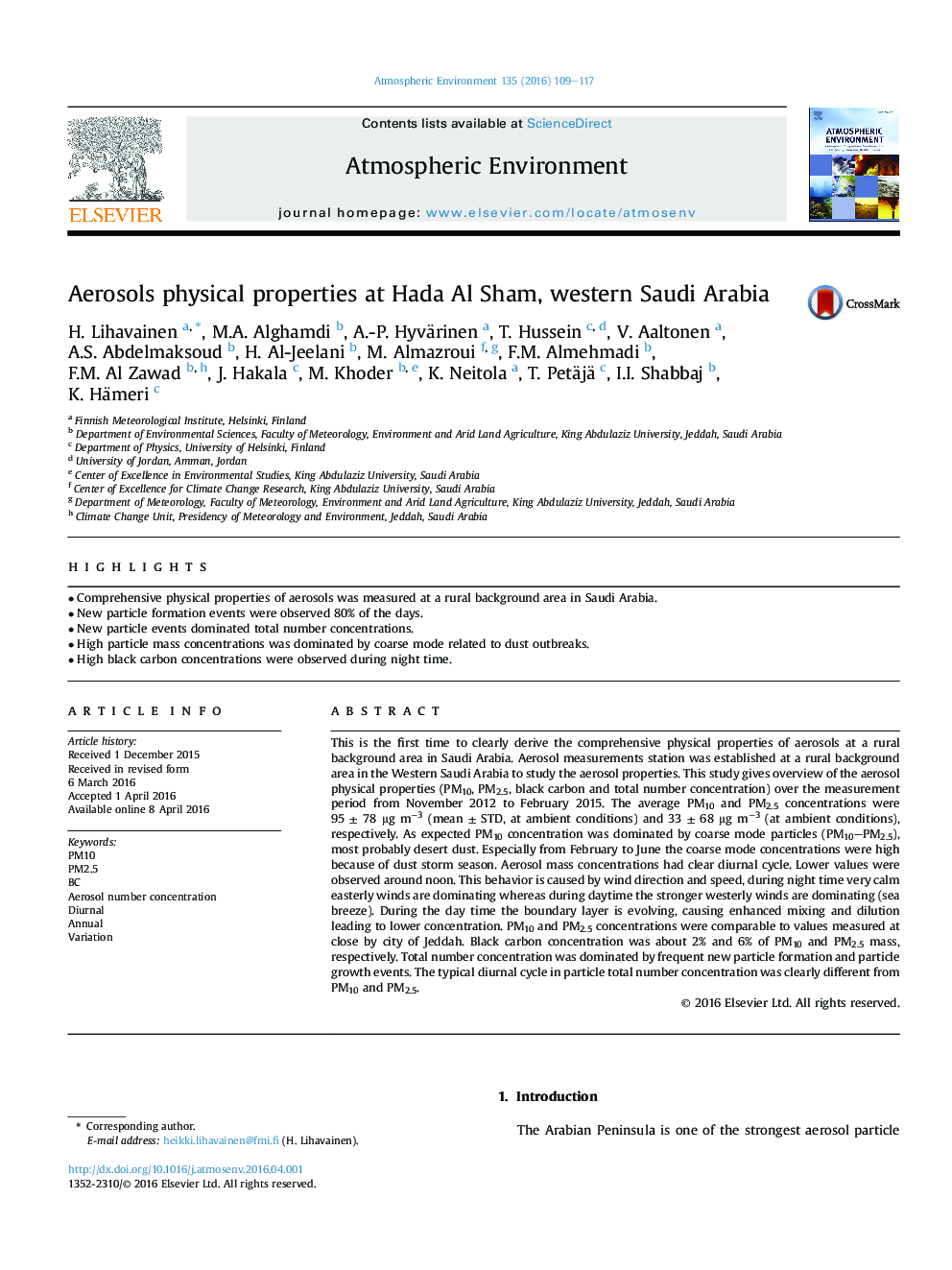| کد مقاله | کد نشریه | سال انتشار | مقاله انگلیسی | نسخه تمام متن |
|---|---|---|---|---|
| 6336341 | 1620339 | 2016 | 9 صفحه PDF | دانلود رایگان |
- Comprehensive physical properties of aerosols was measured at a rural background area in Saudi Arabia.
- New particle formation events were observed 80% of the days.
- New particle events dominated total number concentrations.
- High particle mass concentrations was dominated by coarse mode related to dust outbreaks.
- High black carbon concentrations were observed during night time.
This is the first time to clearly derive the comprehensive physical properties of aerosols at a rural background area in Saudi Arabia. Aerosol measurements station was established at a rural background area in the Western Saudi Arabia to study the aerosol properties. This study gives overview of the aerosol physical properties (PM10, PM2.5, black carbon and total number concentration) over the measurement period from November 2012 to February 2015. The average PM10 and PM2.5 concentrations were 95 ± 78 μg mâ3 (mean ± STD, at ambient conditions) and 33 ± 68 μg mâ3 (at ambient conditions), respectively. As expected PM10 concentration was dominated by coarse mode particles (PM10-PM2.5), most probably desert dust. Especially from February to June the coarse mode concentrations were high because of dust storm season. Aerosol mass concentrations had clear diurnal cycle. Lower values were observed around noon. This behavior is caused by wind direction and speed, during night time very calm easterly winds are dominating whereas during daytime the stronger westerly winds are dominating (sea breeze). During the day time the boundary layer is evolving, causing enhanced mixing and dilution leading to lower concentration. PM10 and PM2.5 concentrations were comparable to values measured at close by city of Jeddah. Black carbon concentration was about 2% and 6% of PM10 and PM2.5 mass, respectively. Total number concentration was dominated by frequent new particle formation and particle growth events. The typical diurnal cycle in particle total number concentration was clearly different from PM10 and PM2.5.
Journal: Atmospheric Environment - Volume 135, June 2016, Pages 109-117
